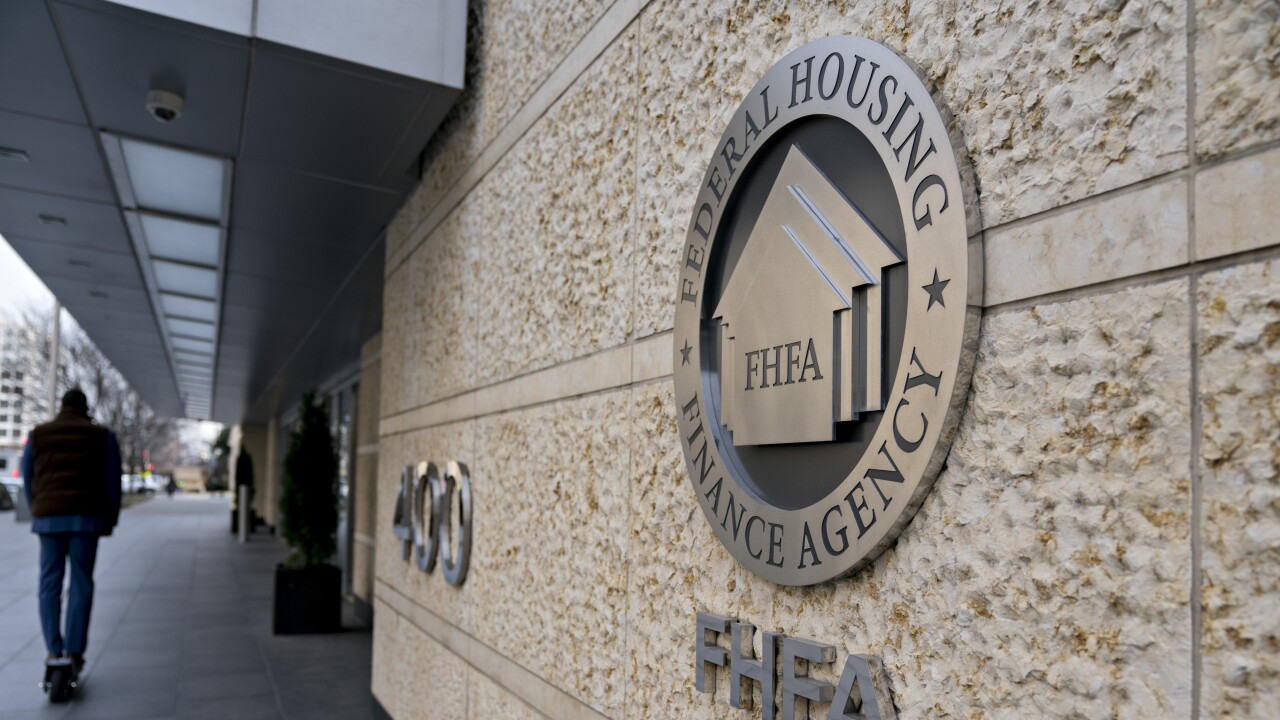-
The FHFA and FHA both announced for the second time that they were delaying the freeze to protect borrowers and renters during the coronavirus pandemic.
June 17 -
As they prepare to exit government conservatorship, Fannie Mae and Freddie Mac have enlisted the investment banks to help them boost capital and evaluate market opportunities.
June 15 -
The number of loans going into coronavirus-related forbearance ground down to a growth rate of 2 basis points between June 1 and June 7, according to the Mortgage Bankers Association.
June 15 -
Mortgage rates increased slightly for the second consecutive week, buoyed early on by positive economic news such as the jobs report that came out last Friday, according to Freddie Mac.
June 11 -
The FHFA’s proposal is intended to strengthen Fannie Mae and Freddie Mac, but many experts warn that it could boost guarantee fees for lenders that they say may be passed on to borrowers.
June 8 -
The FHFA looks to shed light on the amount of funds Fannie and Freddie will need to hold for their risk-sharing deals.
June 3 -
The firm also predicts that the coronavirus pandemic will delay the GSEs' release from government control.
June 3 -
Fannie Mae and Freddie Mac have different timelines for the switch.
May 28 -
Forecasts about the pandemic's impact on the mortgage market have grown less dire after forbearance requests by homeowners nearly leveled off in the first half of May.
May 26 -
Some observers wonder if proposed regulatory targets for Fannie Mae and Freddie Mac will stoke concerns about low shareholder returns. But others suggest those fears are unfounded.
May 25 -
The much-anticipated proposal, which would not go into effect until after Fannie Mae and Freddie Mac are privatized, reflects Director Mark Calabria’s aggressive efforts to get the companies on a strong financial footing.
May 20 -
Director Mark Calabria, who abandoned the Fannie and Freddie capital proposal written by his predecessor, said he expects a revised framework to be ready “very soon.”
May 19 -
The Federal Housing Finance Agency clarified that borrowers with Fannie Mae- or Freddie Mac-backed mortgages who have entered into forbearance plans can be eligible for a refi or new purchase once they are considered “current” on their mortgage.
May 19 -
The two mortgage giants said they would begin the process of hiring outside firms to help raise capital that will be needed to exit conservatorship.
May 18 -
Total forbearance driven by the coronavirus rose by 25 basis points, which suggests it is still growing but at a slowing pace, according to the Mortgage Bankers Association.
May 18 -
Ginnie Mae is offering temporary relief related to its acceptable delinquency-rate threshold in response to issuers' need to fulfill the forbearance requirements in the coronavirus rescue package.
May 18 -
The agency's announcement came one day after the agency said it would provide borrowers struggling to stay current with an additional payment deferral option.
May 14 -
Eligible borrowers can add the forborne payments to the end of their loan term.
May 13 -
The government-sponsored enterprises have set new temporary limits on mortgage sales while extending processing flexibilities related to COVID-19.
May 6 -
The total coronavirus-related mortgages in forbearance grew by 55 basis points, in lockstep with rising unemployment claims, according to the Mortgage Bankers Association.
May 4



















